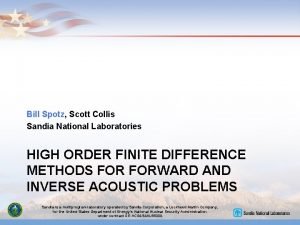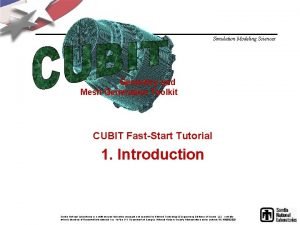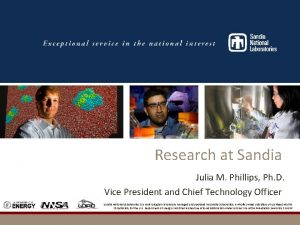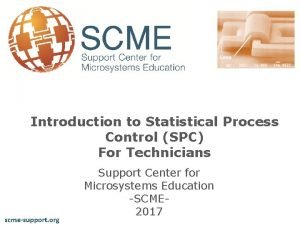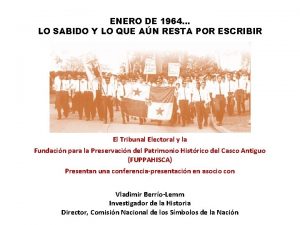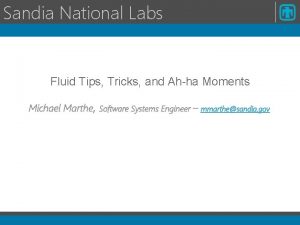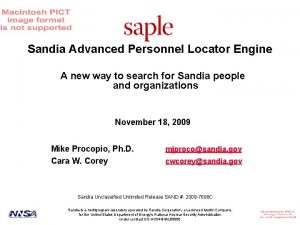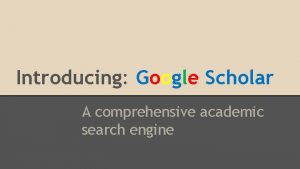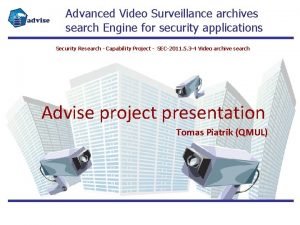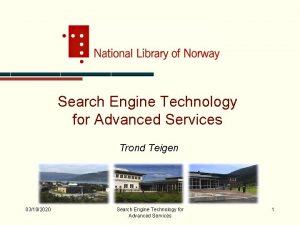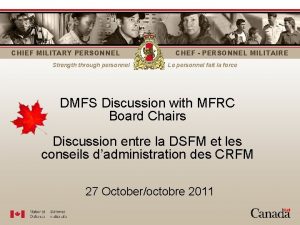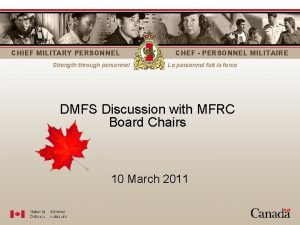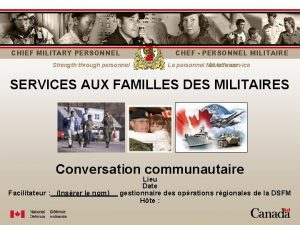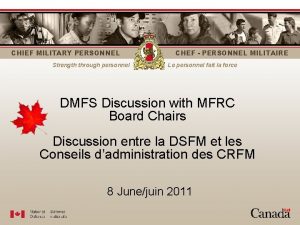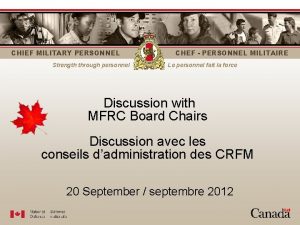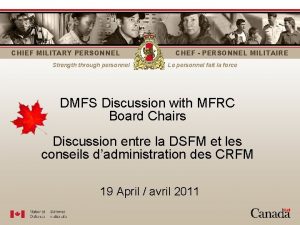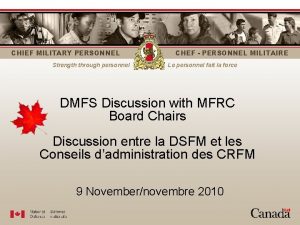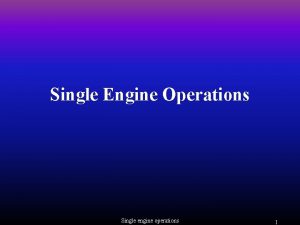Sandia Advanced Personnel Locator Engine A new way

















- Slides: 17

Sandia Advanced Personnel Locator Engine A new way to search for Sandia people and organizations November 18, 2009 Mike Procopio, Ph. D. Cara W. Corey mjproco@sandia. gov cwcorey@sandia. gov Sandia Unclassified Unlimited Release SAND #: 2009 -7698 C Sandia is a multiprogram laboratory operated by Sandia Corporation, a Lockheed Martin Company, for the United States Department of Energy’s National Nuclear Security Administration under contract DE-AC 04 -94 AL 85000.

Significant Initiative to Improve Search at Sandia • Top-down directives, support, and funding to improve the way we organize and retrieve information at Sandia – Support at the CIO office level • Leverage modern methods – Computer science, algorithms focus • Modernization of search capabilities – General intranet search – Directory search – Related: Directory “Landing” page, etc.

In Active Deployment • SAPLE represents an early success with search infrastructure modernization • 10, 000 search queries daily

Operational Goals • Foundational premise: Improve the efficiency and accuracy in personnel search – Faster searches – find the right person the first time • Reduce time it takes to find someone – Recall results that were not available before • Find people that couldn’t be found before – Expose advanced search functionality more easily • Natural language combination searches, such as “C* 8944 885” Cara Corey, who’s in org. 8944 and located in building 885 – More holistic and integrative search experience • Integrate maps, user profile page, department homepage – Improve overall user experience

SAPLE Uses Modern Search Architecture Traditional: Queries Direct to DB SAPLE: Queries Against an Index

SAPLE Architecture

Three SAPLE Cornerstones 1. Inexact (approximate) string matching 2. Intelligent, compound query interpretation 3. Support of search analytics to improve results over time

Examples of inexact string matching are becoming increasingly common Google: “Bernalilo country metr cort” Facebook: “Sharron Procopia”

Better User Experience with One Query Traditional: User must choose where to put query SAPLE: Query is automatically interpreted

Search Analytics • Premise of Search Analytics – Improve search quality over time by mining rich archive data logs of query history • Analyzing log data shows us: – Usage trends – – • Number of queries daily, peak search load times, etc. Where people are searching • Techweb home page, re-searching in SAPLE header/footer, external application hooks, SAPLE home page, etc. What people are searching for • Last name only queries, wildcarded queries, org roster listings, compound queries, user IDs, manager lookups, etc. • Can take name-based queries and identify percentage that would have previously failed due to misspellings How well SAPLE is performing computationally • Average search response time How well SAPLE is performing algorithmically • Percentage of the time people found who they looked for on the first query

Challenges with Deploying a New Way to Search • People are resistant to change… – How do we improve search and other IT infrastructure offerings without disrupting flow of business activities? • CIO supports this: – We must continue to evolve our offerings and progress our capabilities … but change is uncomfortable. We must be cautious not to let vocal minority impede progress. – Tendency is do not improve capabilities for fear of vocal minority • Quantifiable search improvement can help make the case

Making the Case for Change • Existing code base and capabilities will not be sustainable forever – Legacy code, languages, paradigms, interfaces, dependencies… • Assumptions and dependencies of code will change – Changes in underlying personnel database structure; e. g. , imminent retirement of legacy SNL Directory application

Lessons Learned • (If at all possible) don’t rush to deployment – ensure that the tool is thoroughly tested first – While a supportive user base can tolerate advances in functionality with minor glitches in the early stages, don’t assume your users have endless sources of patience and good will • Be prepared for things to appear to be wrong – SAPLE exposed underlying issues with the data (strange nicknames, compound first names, data formatting) • Edge cases can and will come up – Searching for “Joe Nevada” shouldn’t return “Nevada Test Site” – Fast, agile software development with frequent minor updates – Quick turnaround time to fix bugs – Become comfortable with incremental, minor redeployments

More Lessons Learned • It’s not easy for users to change their old habits – Most searches are still in the “lastname, firstname” format • Exploring the limits of the corporate computing infrastructure – SAPLE is a relatively high-volume application: 10, 000 queries daily – Each query associated with server-side algorithmic computation (e. g. , string matching algorithms), which can be burdensome for a server – Applications have many points of failure • Database, Kerberos authentication, network hardware, • And the Web. Logic production server itself with 70+ other shared applications

Still More Lessons Learned • Increased demands on developer skill set, and it’s not a simple process to transfer application support from one developer set to another: – Simple web-app front end that crafts SQL query from discrete textbox fields, executes query, returns results in tabular form – C, Perl vs. – String matching algorithms, regular expression matching for query interpretation, advanced data structures, multithreading, algorithm optimization, logging and analytics, advanced user interface with rich client interactions – Java, Java Enterprise, Servlets, XML, algorithms, database design, stored procedures, optimization – Some advanced computer science concepts

Tabular View

Standard View
 Conventional software
Conventional software Sandia lakes
Sandia lakes Scouts yo tengo un piojo
Scouts yo tengo un piojo Scott collis
Scott collis Sandia vista elementary school
Sandia vista elementary school Cubit sandia
Cubit sandia Julia phillips sandia
Julia phillips sandia Statistical process control
Statistical process control Rima
Rima Incidente de la tajada de sandia
Incidente de la tajada de sandia Sandia labs
Sandia labs Sandia techweb
Sandia techweb Internal combustion engine vs external combustion engine
Internal combustion engine vs external combustion engine Google scholar advanced search engine
Google scholar advanced search engine Advanced video search engine
Advanced video search engine Advanced image search engine
Advanced image search engine Relative frequency two way table
Relative frequency two way table Two way anova
Two way anova



